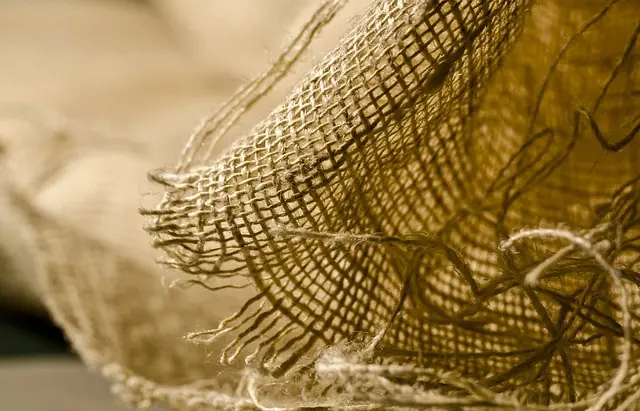Muscle soreness, whether acute or delayed onset (DOMS), can result from various physical activities. DOMS typically occurs 6 to 48 hours after intense exercise due to microscopic damage to muscle fibers. Kr8Kratom, derived from the Southeast Asian plant Mitragyna speciosa, is being explored for its potential to alleviate this soreness. Its key compounds, mitragynine and 7-hydroxymitragynine, interact with opioid receptors, providing pain relief and anti-inflammatory benefits that may help reduce muscle discomfort by modulating the nervous system's response to pain. Kratom strains like Maeng Da and Bali are popular for their efficacy in managing soreness. However, it's important to use kratom cautiously and seek medical advice due to potential side effects and interactions with other substances. Kr8Kratom, a specific brand of kratom, offers an alternative recovery method that can be taken in various forms, including capsules, powder, or tea. Users should start with a low dose and consult healthcare providers before use, especially if they have pre-existing health conditions or are taking other medications. Proper dosing and consideration of individual responses are key to safely harnessing the benefits of Kr8Kratom for muscle soreness relief.
Muscle soreness can be a persistent companion for many, particularly those engaged in rigorous physical activities or exercise routines. This article delves into the multifaceted nature of muscle soreness and its origins, setting the stage for an exploration of kratom’s emerging role as a potential relief strategy. Known as Kr8Kratom, this natural supplement is gaining attention for its mechanisms that may alleviate muscle pain. In the subsequent sections, we will dissect how Kr8Kratom works to ease discomfort and provide a detailed guide on its effective usage for muscle soreness relief. Understanding the science behind muscle soreness and the potential benefits of kratom supplementation can empower individuals to make informed decisions about their health and well-being.
- Understanding Muscle Soreness and Its Origins
- Exploring Kratom's Role in Muscle Soreness Relief: Mechanisms and Usage Guidelines
- Effective Muscle Soreness Relief Strategies with Kr8Kratom Supplements: A Comprehensive Guide
Understanding Muscle Soreness and Its Origins

Muscle soreness, often characterized by discomfort or pain in the soft tissues, can arise from various activities, including intense exercise, physical labor, or even repetitive motions. The scientific community typically categorizes this discomfort into two types: acute and delayed onset muscle soreness (DOMS). Acute soreness occurs immediately after an injury or strenuous activity and is usually less severe. In contrast, DOMS presents anywhere from 6 to 48 hours post-exertion, often as a result of microscopic damage to muscle fibers. This type of soreness is particularly common among individuals engaging in unaccustomed activities or significantly increased training intensity.
Kratom (Mitragyna speciosa), a tropical evergreen tree native to Southeast Asia, has been traditionally used in this region for its various medicinal properties. More recently, kratom has gained attention within the wellness community for its potential role in managing muscle soreness. The active compounds found in kratom leaves, specifically mitragynine and 7-hydroxymitragynine, are thought to interact with the body’s opioid receptors, providing pain relief and analgesic effects. These effects may help alleviate muscle soreness by reducing inflammation and modulating the nervous system’s response to pain signals. Users often report that kratom strains like Maeng Da or Bali can be particularly effective in this regard, offering a natural alternative to over-the-counter pain medication for those experiencing muscle soreness. However, it is crucial to approach the use of kratom with caution and consult healthcare professionals before incorporating it into one’s wellness regimen, especially given its potential for interactions and side effects.
Exploring Kratom's Role in Muscle Soreness Relief: Mechanisms and Usage Guidelines

Kratom, a tropical tree native to Southeast Asia, has garnered attention for its potential role in alleviating muscle soreness. The active compounds found in kratom, primarily mitragynine and 7-hydroxymitragynine, are believed to interact with the body’s opioid receptors, which may contribute to its analgesic effects. These effects can help manage pain associated with muscle fatigue or injury. Users often report that kratom aids in reducing discomfort and promoting a sense of well-being. The alkaloids within kratom may also influence the release of endorphins, which can further contribute to pain relief.
When considering the use of kratom for muscle soreness, it is important to adhere to proper dosing guidelines. Overconsumption can lead to adverse effects and potential dependency. Typically, users take kratom in powder form, which can be mixed with a beverage or encapsulated. The appropriate dosage can vary based on individual tolerance and the severity of muscle soreness. It is advisable to start with a lower dose to gauge its effect before increasing it gradually. Additionally, because kratom interacts with opioid receptors, it should not be combined with other opioid substances or medications without medical supervision. Consulting a healthcare provider before incorporating kratom into a pain management regimen is crucial, especially for those with pre-existing health conditions or who are taking other medications.
Effective Muscle Soreness Relief Strategies with Kr8Kratom Supplements: A Comprehensive Guide

Kr8Kratom supplements have gained attention in various health and wellness routines, particularly for their potential to alleviate muscle soreness. When it comes to recovery after intense physical activity or exercise, muscle soreness is a common concern for both athletes and fitness enthusiasts. The active compounds found in Kr8Kratom, primarily mitragynine and 7-hydroxymitragynine, are believed to interact with the body’s opioid receptors, which can lead to pain relief effects. This interaction may help reduce the sensation of pain and discomfort associated with muscle soreness.
For those seeking natural alternatives to manage post-exercise muscle aches, Kr8Kratom offers a promising option. It is important to note that while Kr8Kratom can be effective, it should be used as part of a comprehensive recovery strategy that includes adequate rest, proper hydration, and nutritious meals. Additionally, individuals should consult with healthcare professionals before incorporating any new supplements into their routine, especially if they have underlying health conditions or are taking other medications. Kr8Kratom can be consumed in various forms, including capsules, powder, or tea, providing flexibility for individual preferences and circumstances. Proper dosing is key to achieving the desired effects without overdoing it, as the right amount of Kr8Kratom can significantly contribute to muscle soreness relief. Users are encouraged to start with a low dose and gradually adjust according to their body’s response and needs.
Muscle soreness can be a significant impediment to both athletic performance and daily activity, often necessitating effective relief strategies. The discussion on muscle soreness origins provides a foundational understanding of its causes, while exploring Kratom’s role delves into the natural supplement’s mechanisms and proper usage guidelines. Kr8Kratom, specifically, emerges as a notable option for those seeking natural remedies to alleviate such discomfort. By integrating Kr8Kratom supplements into a comprehensive approach, individuals may find targeted relief from muscle soreness, enhancing their overall well-being and recovery processes. Users are encouraged to follow the guidelines outlined in the article for safe and effective use of Kratom. As a closing note, it’s prudent for anyone considering Kratom as part of their muscle soreness management plan to consult with a healthcare professional to ensure its suitability for their individual needs.






